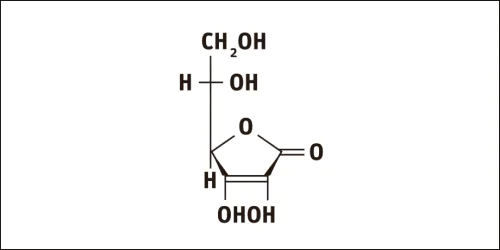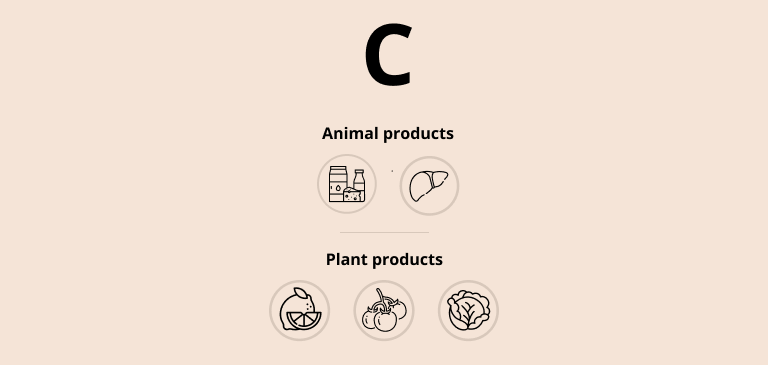Vitamin C
Ascorbic acid
Year of discovery: 1926 | George Whipple, George Richards Minot and William Murphy
Vitamin C acts very similarly to the B vitamins. It acts as an antioxidant or as a cofactor, assisting a specific enzyme during its action. High levels of vitamin C are found in the pituitary and adrenal glands, eyes, white blood cells and brain. Vitamin C performs many tasks - it is involved in collagen synthesis, iron absorption, free radical scavenging, and protects the body from infections and inflammation.
Primary sources of vitamin C
Fruits (especially citrus fruits), brassica vegetables, green leafy vegetables, lettuce, tomatoes, potatoes and liver (beef/veal).
Bioavailability of vitamin C
Vitamin C levels in foods depend on growth conditions, season, stage of human development, cooking practices and storage time before consumption. Vitamin C is rapidly destroyed by heat and oxygen. Absorption levels depend on the amounts consumed. About 70-90% of vitamin C is absorbed. If intake exceeds 1,000 mg per day, absorption levels drop to 50%.
Risks associated with insufficient intake of vitamin C
People who do not consume sufficient amounts of fruits and vegetables are at risk of insufficient vitamin C intake. Free radicals are formed during smoking, so smokers have an increased need for vitamin C. Vitamin C deficiency can cause scurvy - symptoms of scurvy include bleeding gums, small hemorrhages under the skin, fatigue, loss of appetite and weight, and reduced resistance to infection.




